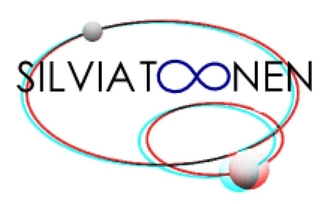Some of my favorite outreach links
- Join our public stargazing nights in Amsterdam (free of charge!)
- Article in popular science magazine Astronomy on Triple star recipe for supersized stellar-mass black holes (english)
- Research brief of OzGrav on massive stellar triples leading to sequential binary black hole mergers in the field (english)
- Article in popular science magazine Kijk Primeur: reuzenplaneet ontdekt bij witte dwergster (nederlands)
- Article in popular science magazine Kijk Planeetkern overleeft dood van ster (nederlands)
Some of my favorite astro links
- Webtool to estimate the dynamical impact of a tertiary star on an inner binary of a hierarchical system. If the previous (shortcut) link doesn't work, try the full link .
- The Facebook group on triple evolution and dynamics. This group is the place for discussing everything related to triple evolution and dynamics - Triples on all scales (stellar, planetary, asteroid, SMBH etc) and with a variety of methods (observationally, analytically, secular etc). Feel free to post papers, upcoming meetings, job alerts, and to advertise your work! Join
- Detexify draw your favorite symbol, and detexify converts to the corresponding latex code
- Dutch thesis template made by Martin van den Akker. Beautiful template, and easy to work with. I highly recommend this one!
And my favorite software links
- TRES is an innovative software package to pioneer the study of triple evolution. The code is uniquely designed to enable the simulation of realistic triple evolution including processes such as stellar evolution, stellar winds, tides, general relativistic effects, mass transfer, and three-body dynamics (based on the double-averaging method up to and including the octupole term). What makes TRES exceptional is that it combines stellar evolution & interactions with three-body dynamics in a self-consistent way. It is this combination that sets triples apart from binaries and that is crucial to uncover the unique role triples play in astronomy. TRES is written in the AMUSE software framework, and can be downloaded here .
- SeBa is a rapid single and binary-star evolution code. Easy to use, fast, well-suited for population studies and experiments of stellar & binary physics, and continuously further developed by the SeBa-team to include state-of-the-art recipes. SeBa can be used as a stand-alone code (download here ), but is also available as part of AMUSE (see below). Depending on the application you might prefer one or the other. SeBa manuals for stand-alone regarding running the code ( short ), compiling the code, how to read the output, and for the data analysis tools .
- AMUSE is an amazing Astrophysical Multipurpose Software Environment. It provides the user with a uniform and easy-to-use software framework for astrophysical simulations, in which existing codes from different domains, such as stellar dynamics, stellar evolution, hydrodynamics and radiative transfer can be easily coupled. See here for the AMUSE book.
- The PopCORN project was a intensive collaboration between four groups focused on binary population synthesis (BPS) research. The goal was to compare the respective BPS codes, and investigate where differences in the results originate from. The most important results of the PopCORN-project are (for low- and intermediate mass binaries): 1) When input assumptions are equalized, the simulated binary populations are similar. 2) The main differences between the simulated populations arise from deviating physical input, and are not due to numerical effects. 3) We identified the physical processes that lead to the largest uncertainty in binary evolution, which we hope can motivate further research into these topics by the astrophysics community.

Contact details:
Email:
toonen [at] uva.nl
Address:
Silvia Toonen
Anton Pannekoek Institute
University of Amsterdam
Science Park 904
1098 XH Amsterdam
The Netherlands